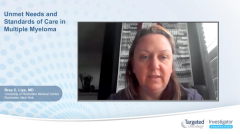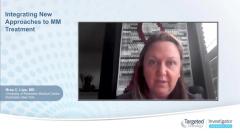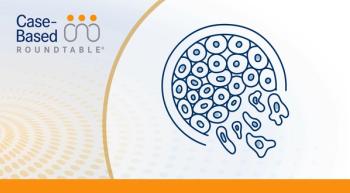
Integrating New Approaches to MM Treatment
Brea C. Lipe, MD reflects on how the PERSEUS trial results may affect future treatment approaches.
Episodes in this series
Summary
Brea C. Lipe, MD explains how the rapid pace of discovery in multiple myeloma means overall survival data cannot always be waited for before changing practice. The compelling progression-free survival benefit with daratumumab-containing quadruplet therapy (DARA-VRd) seen in the PERSEUS trial is practice-changing, mirroring results from the earlier GRIFFIN study. Using fewer drugs is harder to justify given these outcomes. However, PERSEUS included mostly younger, fitter patients. Real-world data is needed to ensure DARA-VRd's applicability to older and frail patients. It will also be interesting to see the long-term impact of stopping daratumumab maintenance after MRD negativity, particularly in high-risk patients. Some reluctance exists around using the most potent combinations upfront since effective options are still needed at relapse. But evidence shows subsequent progression-free survival is not shortened by using the best therapies initially. With many new therapies emerging, a "leap of faith" is required - trust that successive treatments will sustain quality outcomes even after potent upfront regimens like DARA-VRd. Given lengthening patient survival, compelling surrogate endpoints like PFS warrant changing practice. In summary, DARA-VRd represents a new standard of care for fit NDMM patients, with sensible adoption aided by faith in ongoing progress. Mature overall survival data is not needed to incorporate DARA-VRd into practice for appropriate patients.
Summary was AI-generated and edited for clarity.














































